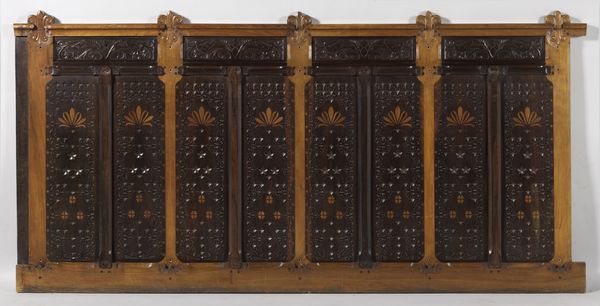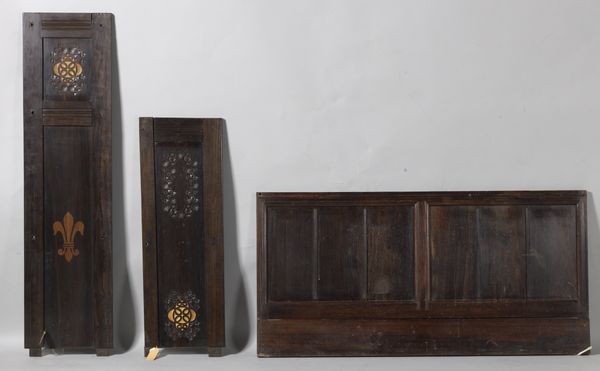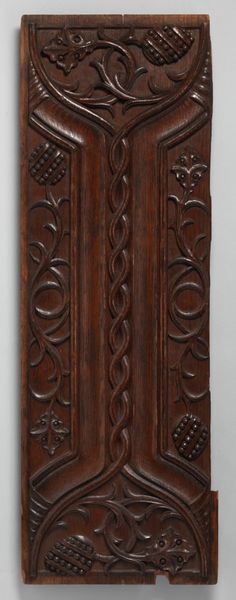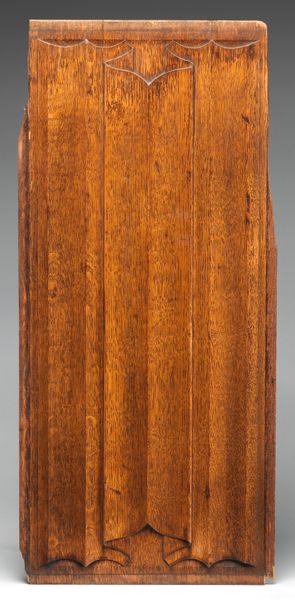
Deel lambrizering, afkomstig uit het huis van Dentz van Schaick c. 1900 - 1905
0:00
0:00
carving, relief, wood
#
carving
#
arts-&-crafts-movement
#
sculpture
#
relief
#
wooden texture
#
wood
#
decorative-art
Dimensions: height 110.0 cm, width 63.5 cm, depth 5.5 cm
Copyright: Rijks Museum: Open Domain
Curator: I'm struck by the imposing nature of these panels. They command a certain reverence with their height and meticulous carvings. Editor: Indeed. We're looking at 'Deel lambrizering, afkomstig uit het huis van Dentz van Schaick', dating back to circa 1900-1905, now housed here at the Rijksmuseum. They were crafted by Carel Adolph Lion Cachet, a name synonymous with Dutch Arts and Crafts. The panels feature intricate wood carvings in relief. Curator: The wood itself presents a dichotomy—the light framing wood provides a vivid border around the darkly stained carved panels, almost a literal framing of art itself, and the symmetry really heightens a sense of formalized aesthetic intention. The details seem painstakingly rendered; I see repeated geometric motifs and stylized floral elements, but are there suggestions of specific meanings beyond just decoration? Editor: Cachet was deeply influenced by the Arts and Crafts movement, a reaction against industrialization. The movement emphasized handcraftsmanship and the integration of art into everyday life. These panels would have originally been part of the wall panelling, a decorative interior feature that reflected a wealthy patron’s taste and social standing, so the carved details speak to the socio-economic contexts and a renewed appreciation for skilled artisanship, reflecting ideals of beauty. Curator: Do you see in the designs any reflections of the architectural trends and aesthetic philosophies that would have been present at the time of the construction of the home? Editor: The stylistic and patterned carvings definitely reflect a desire for visual complexity; there seems a deliberate integration with architectural trends and styles, particularly the aesthetic values that were being established by Dutch elites at that time. These are not simply decorative additions but intentional displays of social identity, revealing specific details about how people desired to express themselves within these walls. Curator: A fitting addition to the museum, showcasing the layered dialogues that emerge when the aesthetic meets the historical. Editor: Absolutely, viewing it in terms of texture, materiality, and composition allows us to trace the aesthetic intent while revealing compelling clues about this cultural moment.
Comments
No comments
Be the first to comment and join the conversation on the ultimate creative platform.













